Doc Ford Country
Compiled and edited by Louis Luzzo
Map Courtesy of Randy Wayne White © All Rights Reserved
Boca Grande
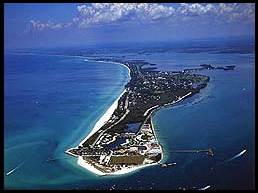 Gasparilla Island’s first inhabitants were the Calusa Indians. They were living on nearby Useppa Island by 800 or 900 AD. Charlotte Harbor was the center of the Calusa Empire, which numbered thousands of people and hundreds of fishing villages. Nine aboriginal sites have been identified on Gasparilla Island and more than 200 others have been found on nearby islands. The sites are identified by shell mounds which also contain pottery shards, fish hooks, and arrowheads. Some of the mounds in the area are 20 feet or more high.
Gasparilla Island’s first inhabitants were the Calusa Indians. They were living on nearby Useppa Island by 800 or 900 AD. Charlotte Harbor was the center of the Calusa Empire, which numbered thousands of people and hundreds of fishing villages. Nine aboriginal sites have been identified on Gasparilla Island and more than 200 others have been found on nearby islands. The sites are identified by shell mounds which also contain pottery shards, fish hooks, and arrowheads. Some of the mounds in the area are 20 feet or more high.
Just like the natives, the early settlers came to Gasparilla Island to fish. The fishermen of the late 1800s, many of them Spanish or Cuban, caught huge catches of mullet and other fish and salted them down for shipment to Havana and other markets. As time wore on, and Boca Grande became known as the Mecca of sport fishing, particularly Tarpon fishing. Many of these same fisherman turned to guiding charters as a secondary, and later, as a primary income. Turn-of-the-century anglers enjoyed the finest Tarpon angling in the world and that continues to this day.
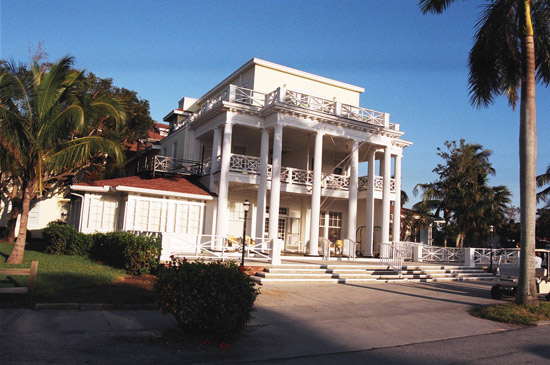 An island institution, The Gasparilla Inn, was completed in time for the 1913 Tarpon season. A few years later, a casino was built near the hotel, and a boathouse was built on Grande Bayou.
An island institution, The Gasparilla Inn, was completed in time for the 1913 Tarpon season. A few years later, a casino was built near the hotel, and a boathouse was built on Grande Bayou.
Today the Inn, with its 18-hole, Pete Dye designed golf course and beautiful beach club on the Gulf of Mexico, is an elegant hub of seasonal social activity. Its reputation for impeccable service is legendary and it is one of the largest employers on the island.
The community of Boca Grande has grown to be a very special place, a hidden gem as Florida’s coastline has become developed. Local residents are active in conservation issues and work hard to keep the island the small peaceful community that it has always been.
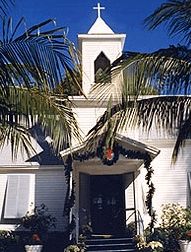 While the area has a thriving sport fishing industry, very little of the commercial fishing that supported the town for so long exists today. Boca Grande has become a very upscale second home and quiet resort community.
While the area has a thriving sport fishing industry, very little of the commercial fishing that supported the town for so long exists today. Boca Grande has become a very upscale second home and quiet resort community.
The town center has grown, but still reflects a small town community of yesterday. A single grocery store, a post office, gift shops, retail shops and boutiques, along with several great restaurants, make up the majority of businesses today. The pace of island life is friendly and relaxed. Most people walk, bike or tour the island on golf carts and consider Boca Grande more of a village than a town.
On the streets of Boca Grande, you could pass a waiter, a fishing guide, corporate CEO, movie star or even the President of the U.S. on any given day.
Cayo Costa
 Reachable only by private boat or a small public ferry that charges $25 for day visitors, Cayo Costa State Park has a dozen shelters with bunks (no electricity) and 18 campsites.
Reachable only by private boat or a small public ferry that charges $25 for day visitors, Cayo Costa State Park has a dozen shelters with bunks (no electricity) and 18 campsites.
The park occupies most of the island which lies in a chain of barrier islands that shelter Charlotte Harbor and Pine Island Sound from the storms of the Gulf of Mexico.
The natural features of the island are stunning. Miles of beaches, acres of pine forests, oak palm hammocks, mangrove swamps and a spectacular display of bird life welcome visitors to this subtropical dreamland. Recreational activities include picnicking, fishing, boating, primitive camping, rental cabins and beach activities. Shelling is especially good during the winter months.

Useppa Island
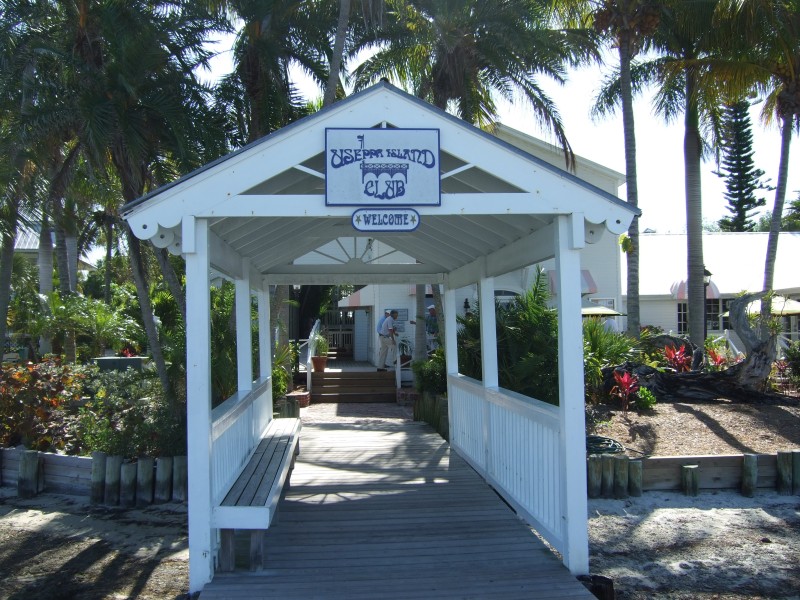 Useppa is a truly private Island Club dedicated to the pure art of relaxation and recreation of its members, owners and guests. Useppa Island is situated within the famous tropical isles of the Southwest coast of Florida. Only a fifteen minute boat ride from the rigors of the mainland, the world seems a million miles away.
Useppa is a truly private Island Club dedicated to the pure art of relaxation and recreation of its members, owners and guests. Useppa Island is situated within the famous tropical isles of the Southwest coast of Florida. Only a fifteen minute boat ride from the rigors of the mainland, the world seems a million miles away.
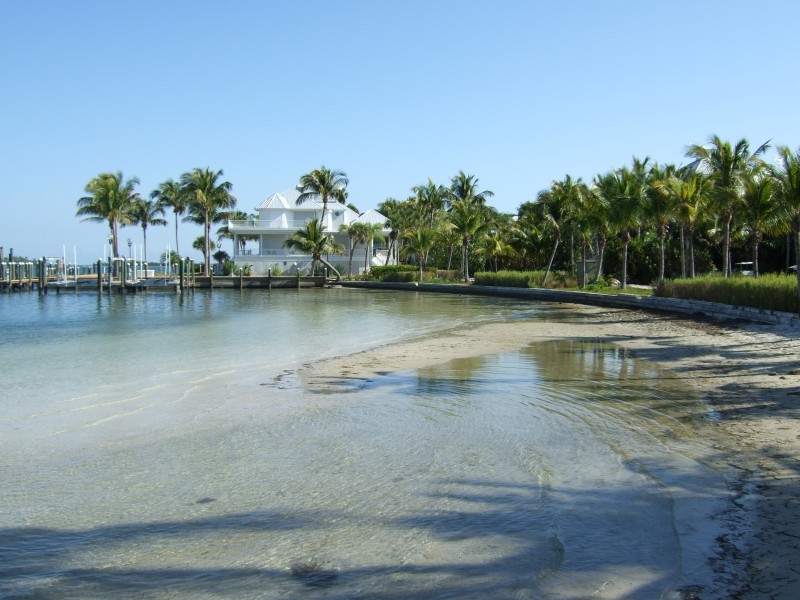 Continuously inhabited for ten thousand years, Useppa was home to nomadic peoples who roamed in search of food in prehistoric times. About ten thousand years ago, the Calusa civilization arose to become one of the most sophisticated native societies to have evolved in North America.
Continuously inhabited for ten thousand years, Useppa was home to nomadic peoples who roamed in search of food in prehistoric times. About ten thousand years ago, the Calusa civilization arose to become one of the most sophisticated native societies to have evolved in North America.
Useppa was a major stronghold of the Calusa tribe, where native people developed a complex society complete with extensive use of tools, use of the natural resources of the surrounding sea, and both cultural and religious development. Even today, visitors to Useppa can see evidence of the Calusa legacy in the many grand "shell-midden" mounds found throughout the island. Several archeological digs have been conducted on the island, in concert with researchers from the University of Florida. Some of the findings have been archived in the Useppa Island Historical Society's museum.
 After centuries of occasional use by fisherman and hardy adventurers, the island was acquired by Chicago streetcar magnate John M. Roach in 1894. Roach built a residence to escape the cold winters of his northern home. Soon his tycoon friends discovered his island hideaway, and convinced him to build a hotel on Useppa so they could also share in his good fortune. One of Roach's guests was the legendary New York advertising executive, entrepreneur, and wealthy Florida land owner Barron G. Collier.
After centuries of occasional use by fisherman and hardy adventurers, the island was acquired by Chicago streetcar magnate John M. Roach in 1894. Roach built a residence to escape the cold winters of his northern home. Soon his tycoon friends discovered his island hideaway, and convinced him to build a hotel on Useppa so they could also share in his good fortune. One of Roach's guests was the legendary New York advertising executive, entrepreneur, and wealthy Florida land owner Barron G. Collier.
 Collier eventually developed much of Southwest Florida, and built the famous "Tamiami Trail" highway between Tampa and Miami. He fell in love with Useppa on his first visit in 1906 and acquired the property, turning it into a classic turn-of-the-century getaway for many industry giants, political bigwigs, and even Hollywood celebrities who escaped to Useppa for her infamous tranquility, elegant accommodations, first-class cuisine, and unsurpassed tropical beauty.
Collier eventually developed much of Southwest Florida, and built the famous "Tamiami Trail" highway between Tampa and Miami. He fell in love with Useppa on his first visit in 1906 and acquired the property, turning it into a classic turn-of-the-century getaway for many industry giants, political bigwigs, and even Hollywood celebrities who escaped to Useppa for her infamous tranquility, elegant accommodations, first-class cuisine, and unsurpassed tropical beauty.
Thus began the modern tradition still with us today. In 1908 the Izaak Walton Club was founded, solidifying Useppa's important role in the area's world-famous tarpon fishing industry, and for some years Useppa served as the private vacation estate of Collier. Some of the notables who frequented Useppa during the "Golden Years" were; The Vanderbilts, Herbert Hoover, Rockefellers, Rothschilds, Gloria Swanson, Shirley Temple and Zane Grey to name a few. The island was later abandoned and used by the U.S. government as a base for the Bay of Pigs invasion.
 The Collier Inn has been meticulously restored back to her grand days at the turn of the last century. She now boasts seven spectacular suites designed around unique, eclectic themes to accommodate guests in unsurpassed comfort in an elegant atmosphere. Most suites offer a private terrace with a view of Pine Island Sound and the lush landscape surrounding this century old Inn. The Collier Inn may be the perfect spot for your personal bit of respite and relaxation. An evening at the Inn includes a fresh continental breakfast.
The Collier Inn has been meticulously restored back to her grand days at the turn of the last century. She now boasts seven spectacular suites designed around unique, eclectic themes to accommodate guests in unsurpassed comfort in an elegant atmosphere. Most suites offer a private terrace with a view of Pine Island Sound and the lush landscape surrounding this century old Inn. The Collier Inn may be the perfect spot for your personal bit of respite and relaxation. An evening at the Inn includes a fresh continental breakfast.

"One of the top 25 true island retreats in the world - serenity, great facilities and fishing, and no cars - Useppa has it all." - Conde' Nast Traveler

Cabbage Key
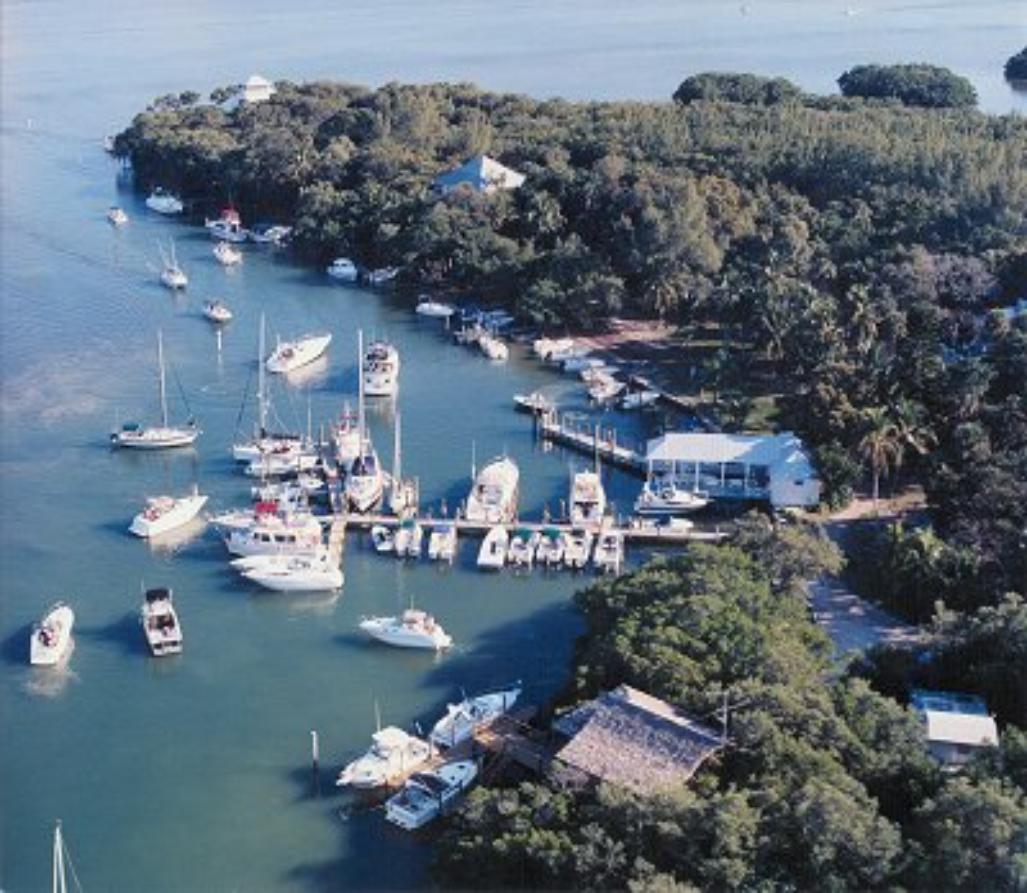 One hundred acres of tropical vegetation surround a historic restaurant, inn and cottages. A panoramic view of Pine Island Sound is provided from the front porch atop a thirty-eight foot Indian shell mound. There are no cars, not even a paved road. You will find winding nature trails, picturesque views and relaxation .
One hundred acres of tropical vegetation surround a historic restaurant, inn and cottages. A panoramic view of Pine Island Sound is provided from the front porch atop a thirty-eight foot Indian shell mound. There are no cars, not even a paved road. You will find winding nature trails, picturesque views and relaxation .
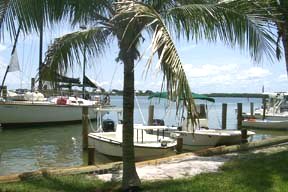 Accessible only by boat, helicopter or seaplane. Regularly scheduled boats run everyday from Pine Island, Captiva Island and Punta Gorda. Remote and self-reliant, do things "the Cabbage Key way," a style reminiscent of the nearly extinct old Florida. Gazing across the water reveals a sprawling canopy of stars and twinkling lights on the ICW.
Accessible only by boat, helicopter or seaplane. Regularly scheduled boats run everyday from Pine Island, Captiva Island and Punta Gorda. Remote and self-reliant, do things "the Cabbage Key way," a style reminiscent of the nearly extinct old Florida. Gazing across the water reveals a sprawling canopy of stars and twinkling lights on the ICW.
The local waters are world famous for Redfish, Tarpon, and Snook fishing. Charter services, fishing guides, and boat rentals are available.
Upper Captiva
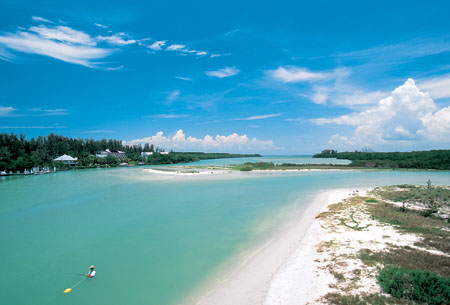 A small colony located near Fort Myers in Lee County, Florida. Transportation to the island retreat is by private boat, private airplane to an invitation only grass landing strip, or by reservations on a local water taxi which makes several trips daily from Pine Island to Upper Captiva Island across Pine Island Sound.
A small colony located near Fort Myers in Lee County, Florida. Transportation to the island retreat is by private boat, private airplane to an invitation only grass landing strip, or by reservations on a local water taxi which makes several trips daily from Pine Island to Upper Captiva Island across Pine Island Sound.
Many activities are available for the visitors of Upper Captiva Island: fishing, shelling, swimming, nature walks, and trips to nearby islands to sight see and picnic. Also, our private club, The Safety Harbor Club, provides dockage in the protected harbor, a pool, clubhouse, tennis courts, observation decks and gazebos.
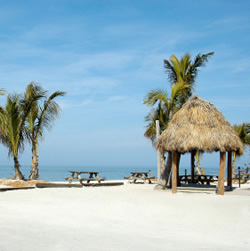 Beaches, observation decks, docks, and pathways provide visitors with many opportunities to observe tropical wildlife, flora and fauna. The islands shores have some of the best shelling in our hemisphere. Manatees and sea turtles live in the waterways.
Beaches, observation decks, docks, and pathways provide visitors with many opportunities to observe tropical wildlife, flora and fauna. The islands shores have some of the best shelling in our hemisphere. Manatees and sea turtles live in the waterways.
The remote location provides for some wonderful opportunities to observe the stars and constellations of the evening sky. Sunshine and tropical weather patterns create an atmosphere for year round outdoor activities and relaxation.

Pine Island
Pine Island consists of Matlacha (Mat-la-shay), Pine Island Center, Bokeelia (Bo-keel-ya), Pineland and St. James City. Each community treasures its own distinctive ambiance.
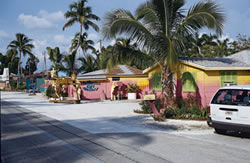
Matlacha looks like an "old Florida" fishing village. It also has a growing collection of art galleries, gift and islandwear shops and boutiques, seafood restaurants, small motels and cottages. The drawbridge over Matlacha Pass is known as the "Fishingest Bridge in the World," with anglers fishing the bridge, night and day, in all kinds of weather (mostly sunny). There are plenty of bait and tackle suppliers and two full-service marinas that also rent boats, Olde Fish House Marina and Viking Marina.
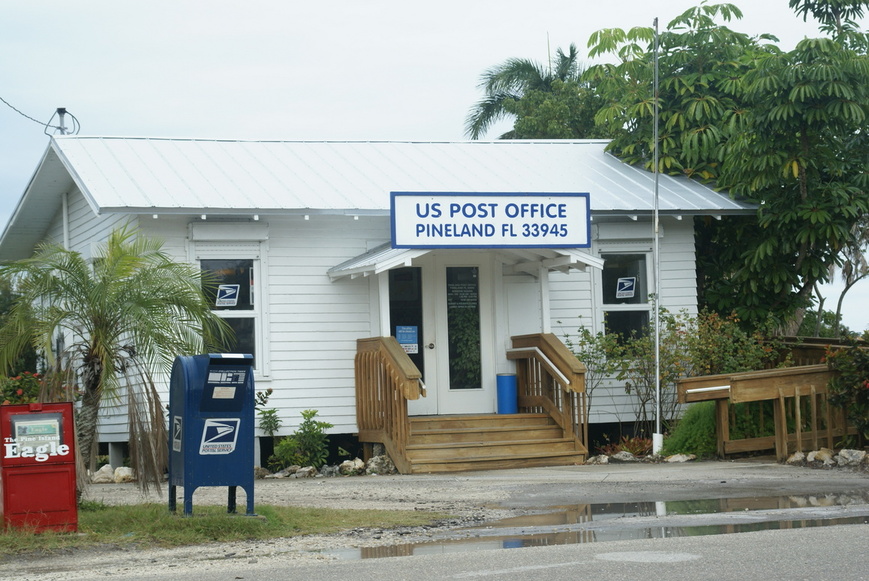 Pineland, one of the main sites of Calusa Indian mounds, boasts one of the country's smallest Post Office buildings and provides the island's only golf course at Alden Pines Country Club.
Pineland, one of the main sites of Calusa Indian mounds, boasts one of the country's smallest Post Office buildings and provides the island's only golf course at Alden Pines Country Club.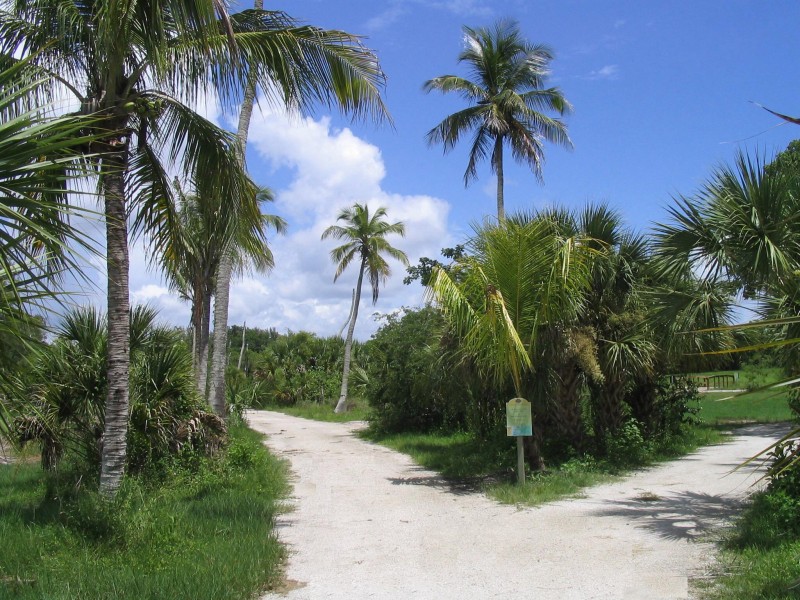
It is also site of full-service Pineland Marina. There are several water taxi, fishing charter and boat rentals services based at the marina, including the "Tropic Star" Cruiseboat.
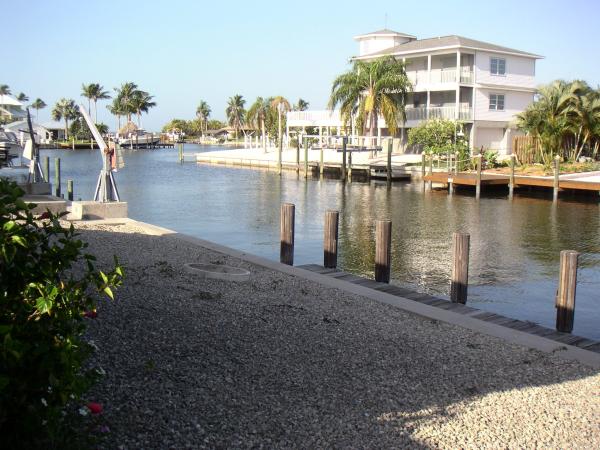 St. James City is Pine Island's most developed area with about two thirds of the island's population. Most of its homes are located on canals with direct access to Pine Island Sound, San Carlos Bay and the Gulf of Mexico. The canals at the southern tip of Pine Island are also home to Bob and Annie's Boatyard, York Road Marina and Fishin' Fever Marina.
St. James City is Pine Island's most developed area with about two thirds of the island's population. Most of its homes are located on canals with direct access to Pine Island Sound, San Carlos Bay and the Gulf of Mexico. The canals at the southern tip of Pine Island are also home to Bob and Annie's Boatyard, York Road Marina and Fishin' Fever Marina.
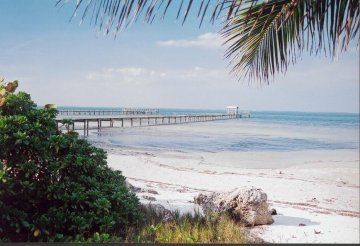
Bokeelia is homeport for many of the island's commercial fishermen and the site of several historic buildings. Fishing charter services, boat rentals and water taxi services are also available at Four Winds Marina. In addition, the Useppa Island Shoreport is located at the Bocilla Island Club Marina.
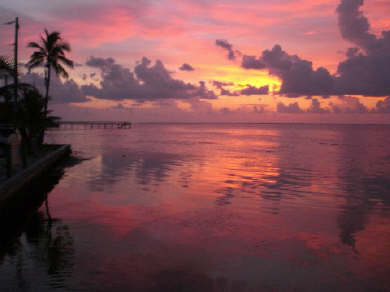
Bokeelia is also the primary location of many of Pine Island's thriving, subtropical agribusinesses featuring mangoes, pineapples, citrus, row crops and a wide variety of exotic tropical fruits including the carambola, longan, papaya, lychee and loquat.

Captiva
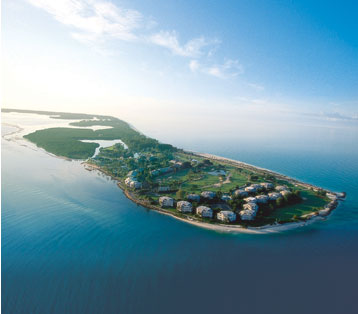 You will be captivated by beautiful, alluring Captiva Island, where once, it is said, pirates roamed, conquistadors explored and Calusa Indians called home. The mystery and adventure is still here. Treasures to be found in the way of a good life, spectacular white sand beaches scattered with "treasures from the sea", pastel colored seashells and breathtaking sunrises and sunsets. There are superb accommodations, restaurants & shopping. Visitors van also enjoy golfing, tennis, fishing, boating, and children's activities.
You will be captivated by beautiful, alluring Captiva Island, where once, it is said, pirates roamed, conquistadors explored and Calusa Indians called home. The mystery and adventure is still here. Treasures to be found in the way of a good life, spectacular white sand beaches scattered with "treasures from the sea", pastel colored seashells and breathtaking sunrises and sunsets. There are superb accommodations, restaurants & shopping. Visitors van also enjoy golfing, tennis, fishing, boating, and children's activities.
 Captiva Island, sister to larger Sanibel Island, is just over a small bridge which crosses at Turner Beach. Turner Beach is a great place for catching that prize fish and also for finding the colorful shells that these islands are famous for. The beach stretches 5 miles to the northern tip of Captiva Island at Redfish Pass.
Captiva Island, sister to larger Sanibel Island, is just over a small bridge which crosses at Turner Beach. Turner Beach is a great place for catching that prize fish and also for finding the colorful shells that these islands are famous for. The beach stretches 5 miles to the northern tip of Captiva Island at Redfish Pass.
From the bridge at Turner beach, Captiva Drive is a scenic drive past giant cactus, colorful bougainvilleas and other tropical flora along a stretch of sea and sand ending at "downtown" Captiva, which is more of a village than a town.
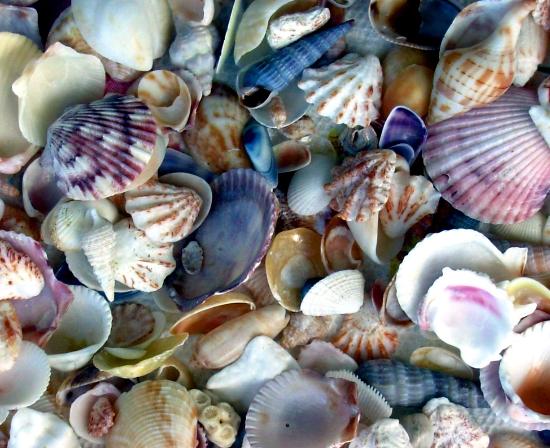
Shelling is so much fun and Captiva Island has such a variety of shells to find, just to collect and admire or use in a craft, on a mirror, lamps, boxes etc. Captiva is one of the islands that is literarily made up of shells, created over thousands of years, and is one of the islands that is considered best in the world for shelling. The islands geography of lying east and west rather than north and south, as most islands, allows Captiva and its sister islands to catch abundant sea shells from the Gulf of Mexico.

Sanibel

Sanibel Island has everything one could wish for...excellent restaurants, accommodations, golfing, tennis, fishing, boating, shopping, bike paths, canoes, theatrical productions and the renowned J.N. "Ding Darling" National Wildlife Refuge & Bird Sanctuary. Since 1884 Point Ybel Lighthouse has guided seafarers to Sanibel Island's shores.

 Sanibel Island is world renowned for its shelling beaches and the "Sanibel Stoop". In the travel industry Sanibel Island is a top Florida destination for visitors. If you want a truly unforgettable family vacation, holiday, wedding, honeymoon, anniversary or get-away, this is the place to be. Visit Sanibel Island and do it all… or just lay back on the beach with the book you've been wanting to read or… just do absolutely nothing.
Sanibel Island is world renowned for its shelling beaches and the "Sanibel Stoop". In the travel industry Sanibel Island is a top Florida destination for visitors. If you want a truly unforgettable family vacation, holiday, wedding, honeymoon, anniversary or get-away, this is the place to be. Visit Sanibel Island and do it all… or just lay back on the beach with the book you've been wanting to read or… just do absolutely nothing.


The J. N. "Ding" Darling National Wildlife Refuge is part of the largest undeveloped mangrove ecosystem in the United States. World famous for its spectacular migratory bird populations, J. N. "Ding" Darling is one of over 540 refuges in the National Wildlife Refuge System administered by the U. S. Fish & Wildlife Service. The Refuge was created to safeguard and enhance the pristine wildlife habitat of Sanibel Island, to protect endangered and threatened species, and to provide feeding, nesting, and roosting areas for migratory birds. Today, the refuge provides important habitat to over 220 species of birds.


A political cartoonist with an eye toward conservation, Jay Norwood "Ding" Darling was instrumental in the effort to block the sale of a parcel of environmentally valuable land to developers on Sanibel Island. At Darling's urging, President Harry S. Truman signed an Executive Order creating the Sanibel National Wildlife Refuge in 1945.

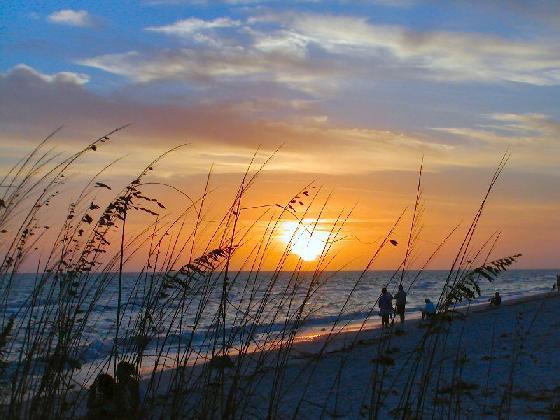 Having a sub-tropical climate, Sanibel visitors and residents enjoy the outdoors and sunshine all year long. Whether you choose to go boating, kayaking, canoeing, water-skiing or fishing from one of the favorite spots, Sanibel has it all. If you choose to play a round of golf on one of the over 70 challenging scenic courses, the island is the perfect place to tee off and test your mettle on the green. Go bike riding on the miles of bike paths, or explore the waterways by boat where you will see frolicsome dolphins, graceful blue herons, inquisitive raccoons and colorful birds of all species. Truly Doc Ford's Paradise, you will enjoy a memorable experience here that you will cherish for all time.
Having a sub-tropical climate, Sanibel visitors and residents enjoy the outdoors and sunshine all year long. Whether you choose to go boating, kayaking, canoeing, water-skiing or fishing from one of the favorite spots, Sanibel has it all. If you choose to play a round of golf on one of the over 70 challenging scenic courses, the island is the perfect place to tee off and test your mettle on the green. Go bike riding on the miles of bike paths, or explore the waterways by boat where you will see frolicsome dolphins, graceful blue herons, inquisitive raccoons and colorful birds of all species. Truly Doc Ford's Paradise, you will enjoy a memorable experience here that you will cherish for all time.
Cape Coral
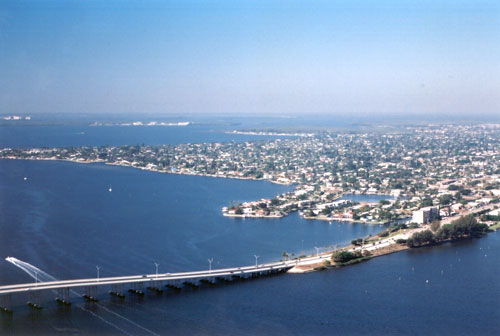
Cape Coral, the largest canal city in the world, lies west of Fort Myers across the broad sweeping estuary of the Caloosahatchee River.
Cape Coral is located only 20 minutes drive from the white sandy beaches of Sanibel Island and 35 minutes from the city of Naples and provides a annual average temperature of 80 degrees with endless sunshine.
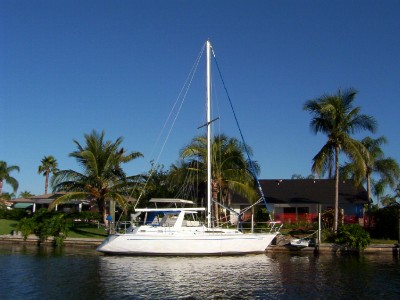
Cape Coral, surrounded by coastline and its extensive system of canals and lakes provides great opportunities for boating, fishing and all the popular and fun watersports. 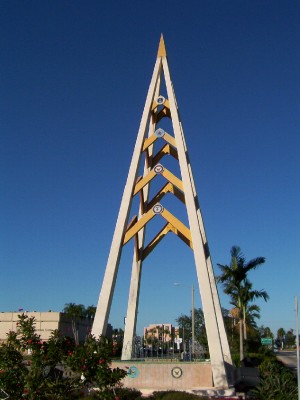 Boats are available to rent and charter and there are many trips available out to sea for fishing or just relaxing.
Boats are available to rent and charter and there are many trips available out to sea for fishing or just relaxing.
Known as an ideal location for family fun, Cape Coral offers a 12 acre family water park, a family sports amusement center, and a children's science center, Four Freedom Parks and a Four Mile Eco-park.
Cape Coral's harbour and waterfront provides a magnet for prestigious yachting marinas, while the downtown development provides a variety of unique specialty shops to well-known national favorites.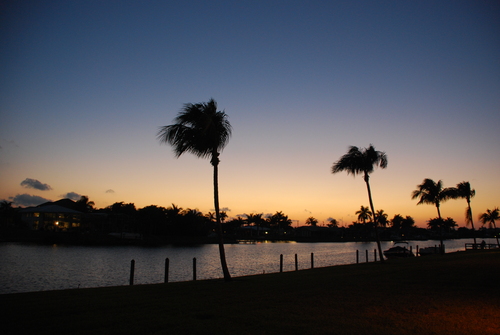
Whatever you want from your holiday you'll find that this growing community maintains a friendly, small-town atmosphere which invites you to discover a wealth of activities and attractions.

Ft. Myers & Ft. Myers Beach
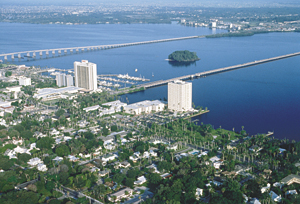
Downtown Fort Myers, also known as the River District, forms the core of a city that stretches for miles south along the Caloosahatchee River and east to the rural interior. Named for a Civil War-era army colonel, Fort Myers' history parallels that of Florida itself.
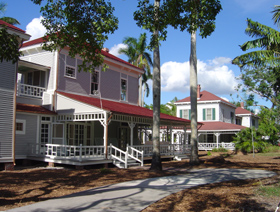
Established in 1886, Fort Myers is the historical and governmental hub of Lee County. It is the gateway to the Southwest Florida region, which is a major tourist destination in Florida. The winter homes of Thomas Edison (Seminole Lodge) and Henry Ford (The Mangoes), which are both primary tourist attractions in the region, are located on McGregor Boulevard in Fort Myers.Indigenous peoples, the Calusa Indians, inhabited the islands nearby. Later, pioneers settled the pine flatwoods, and cattle drivers escorted their charges down what is now McGregor Boulevard to ships docked at Punta Rassa.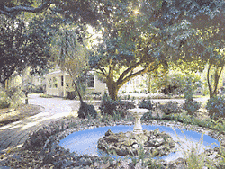
Thomas Edison and Henry Ford put the town on the proverbial map when they chose the City of Palms as their winter getaway.
Incorporated in 1886, Fort Myers is the center of a popular tourist area in Southwest Florida and the seat of Lee County. It is located about 120 miles south of Tampa at the meeting point of the Gulf of Mexico and the Caloosahatchee River. The first known resident of what is now Fort Myers was Manuel Gonzalez, a Spaniard from the province of Asturias, who came via Cuba in the 19th century.

Col. Abraham C. Myers
The fort was abandoned until 1863 when a small number of Federal Col. Abraham C. Myers troops re-occupied the fort during the Civil War. In 1865 the fort was attacked unsuccessfully by a very small group of Confederates. After the war, the fort was again deserted.
The first settlers arrived in 1866, but it wasn't until 1882 when the city experienced a significant influx of settlers. By 1885, when Fort Myers was incorporated, it was the second largest city only to Tampa on Florida's west coast south of Cedar Key even larger than Clearwater and Sarasota, also growing cities at the time.
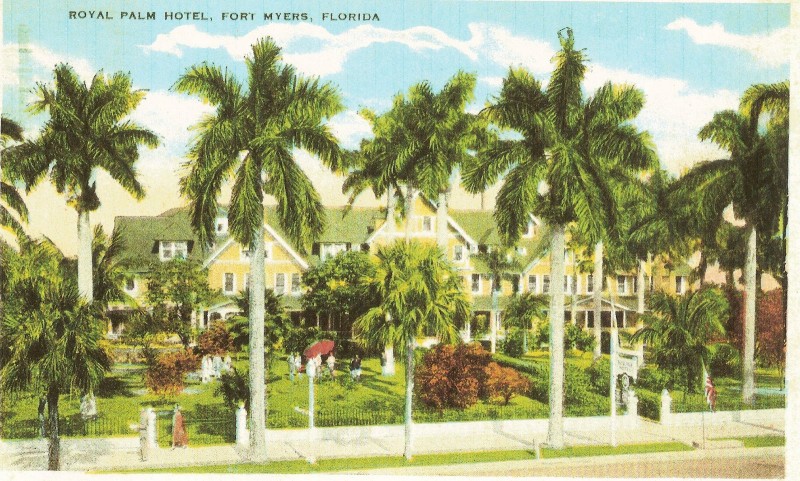

Today, Fort Myers is a bustling metropolis with ecological, historical and cultural attractions, as well as shopping across the spectrum; High-end outlets, antiques, boutiques and outdoor malls, dining and nightlife and entertainment. When the sun goes down, – watch a spectacular “show" over the Caloosahatchee.
 Hammond stadium in South Fort Myers is the home of the Fort Myers Miracle baseball club of the Florida State League, and is the spring training locale for the Minnesota Twins. The Boston Red Sox hold their spring training at City of Palms Park close to downtown Fort Myers.
Hammond stadium in South Fort Myers is the home of the Fort Myers Miracle baseball club of the Florida State League, and is the spring training locale for the Minnesota Twins. The Boston Red Sox hold their spring training at City of Palms Park close to downtown Fort Myers.
Ft. Myers Beach
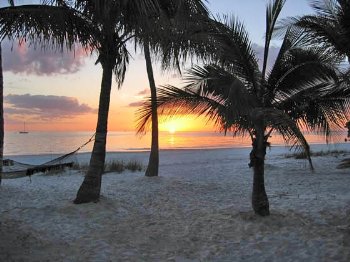 Over 1.8 million annual visitors enjoy the beaches, fishing, shopping, dinning, golf, tennis and entertainment on the sandy shores.The Beach gained a reputation as the World's Safest Beach because of no undertow and shallow water. People can walk the entire 7-mile length of the island along its sandy shores.
Over 1.8 million annual visitors enjoy the beaches, fishing, shopping, dinning, golf, tennis and entertainment on the sandy shores.The Beach gained a reputation as the World's Safest Beach because of no undertow and shallow water. People can walk the entire 7-mile length of the island along its sandy shores.
Turn the hourglass and watch the sands of time trickle back to the past of Fort Myers Beach. Return to the time when pirates buried treasure, Spaniards built forts, Indians hunted on the Beach, homesteaders staked their claims, shrimpers netted pink gold, a hurricane severed a land connection and mosquito hordes clouded the air.
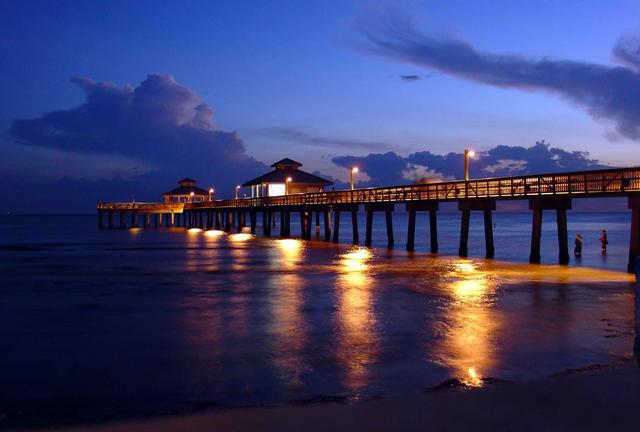 The last homesteader staked his claim in Estero Island in 1914. Leroy Lemoreaux cleared his land and survived by growing vegetables and fishing.
The last homesteader staked his claim in Estero Island in 1914. Leroy Lemoreaux cleared his land and survived by growing vegetables and fishing.
Lemoreaux remembered bears stalking the island and panthers howling in the night. In the 1890's, the only weapon they had against the hordes of mosquitoes was smoke.Those were the days before bridge linked the island to the mainland of Fort Myers area. A wooden swing toll bridge was the first bridge built in 1921. The toll was 50 cents for five people. The 1926 hurricane washed it away and severed the slim neck of land attaching San Carlos to the mainland making it and island. Today, it's still called Hurricane Pass.
 In the 1870's, pirates plied their trade along the shores. That's how Black Island, south of Estero, got its name. After a defeat by the U.S. Navy, Black Augustus took his loot and settled on the island. The family of John Butterfield squatted on Mound Key in Estero Bay during that time and provisioned the aging pirate with sugar, coffee, grits and other luxuries in exchange for vegetables. When the pirate died, he showed the family where to dig up his booty. Perhaps more treasure is hidden along the shores. Rumors persist that pirates used to sink long boats laden with treasure to later recover.
In the 1870's, pirates plied their trade along the shores. That's how Black Island, south of Estero, got its name. After a defeat by the U.S. Navy, Black Augustus took his loot and settled on the island. The family of John Butterfield squatted on Mound Key in Estero Bay during that time and provisioned the aging pirate with sugar, coffee, grits and other luxuries in exchange for vegetables. When the pirate died, he showed the family where to dig up his booty. Perhaps more treasure is hidden along the shores. Rumors persist that pirates used to sink long boats laden with treasure to later recover.

The Beach hosts an annual Sand sculpting Contest in November and the Shrimp Festival in March draws thousands to the Blessing of the Shrimp Fleet. A July 4 Fireworks Display and Old Fashioned Family Day sparks the annual Independence Day Festival. Golf tournaments, Taste of the Beach, Annual New Year's Eve Celebrations, Offshore Powerboat Races and other sporting events liven life on the Beach.

Sometimes, I think those of us that live here tend, unfortunately, to take where we live for granted. It's easy to get caught up in the day to day routine of our lives and forget to stop or even visit these wonderful treasures that we have right here in our own back yard. Whether you live here, are just visiting, or are thinking of a visit, the one thing we can all agree on is.... this is truly Paradise.
So the next time you are driving down Periwinkle on Sanibel Island, and see that big guy jogging down toward the beach, or you are out fishing and some one comes flying by in a flats skiff, stop and take a good look. Ya never know. It just might be a fellow who lives around here and goes by the name of Doc.


